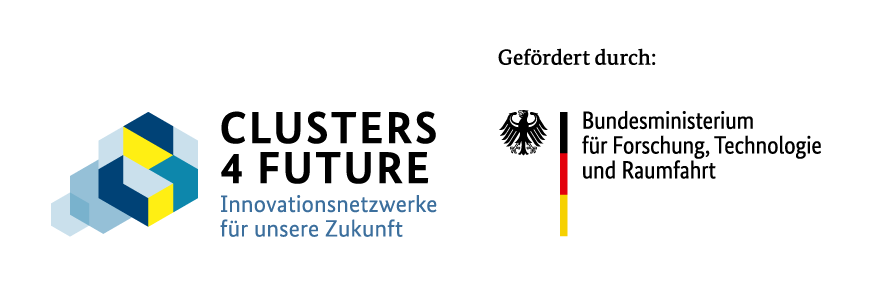Once utopia and back.
The MCube Speaker Series has concluded the aqt Summerschool (aqt = Car-reduced districts for a liveable city - one of the 14 MCube innovation projects) and presented exciting suggestions, visions, facts and ideas for the district of the future. Free of charge and outside, on September 23, 2022, in the middle of the Au, on a centrally located public square that is normally designated for 10 parking spaces. For one day, this space was rededicated, a transportable bicycle stage was set up by Green City and the entire space was transformed into a meeting place of the future by TUM students. The mobile exhibition and participation bike trailer from club.loko was used as an exhibition space for the interim results.
As part of the summer school, TUM Master's students from various disciplines spent two weeks researching two neighborhoods in Munich - the Südliche Au and in Giesing at Walchenseeplatz - and asked the opinions and attitudes of local residents in small interventions. They wanted to know: How can we all work together to shape the urban districts of the future today?
More than 80 interested citizens and experts came together at the end to discuss the street experiments carried out and their innovative ideas for the future of the Au and Giesing districts. The findings will serve as a prelude to an exchange with regard to two large-scale real-world laboratories next summer.
Embedded in the MCube Speaker Series "Future of Mobility", the following questions were raised and topics discussed:
x From "Greater, Greener New York" to the "FreiRAUM district in Munich": Elena Schirnding de Almeida (architect and urban planner at the Chair of Urban Design at TUM) presented contrasting top-down and bottom-up strategies for change in public spaces and encouraged students and politicians to really have more courage to make changes.
✳️ "Change begins in the way we see the world!" Jan Kamensky (visual utopian from Hamburg) presented his innovative approach with unique animations in which he playfully visualizes the transformation of car-friendly streets into people-friendly places. His vision: After viewers have been able to take a look at the contrasting utopia, they return to reality with a sharpened view - an invitation to reflect on the current situation.
⚒️ "Come to us! Dare to do something! And try it out!" Jörg Spengler and Dr. Uwe Kranenpohl (district committee representatives from Au and Giesing) invite the students and all aqt project staff to try things out in the two districts, to conduct intensive research, to design public spaces in a more experimental way together with the citizens and thus to question habitual mobility behavior.
A big thank you goes especially to the aqt Summerschool students. You make the world a better place: Elias Bradl, Katja Stiefenhofer, Ruike Sun, Jingyi Xu, Julia Carstens, Karolin Scharf, Jodok Kroitzsch, Pauline Sirch, Anne-Sophie Hofmann, Leventcan Er, Julián Sandoval Ávila and Camila Barquero.
The MCube Consulting study shows how the Olympic Games could have a sustainable impact on Munich in terms of sport, society and the environment - something that has already been picked up on by many media outlets.
Munich is considering an Olympic bid - our study shows what opportunities and challenges the Games could bring for the economy, environment and society.
How do we want to move tomorrow? This question was the focus of the Citizens Lab at Marienplatz for six days.
The visual utopian Jan Kamensky presented his latest vision in cooperation with the Munich S-Bahn.
Carolin Zimmer from the Chair of Settlement Structure and Transport Planning and Sebastian Preiß from the Hans Sauer Foundation explain in an interview what the project has achieved and what makes it special.
Major award for a strong team: MCube Consulting receives the Innovation Award of the City of Munich - for a solution that reduces administrative workload, improves security and shows how research enables real change.
If Munich bids for the Olympics again, it will not do so arbitrarily - but with vision, attitude and a clear plan.
MCube had its own stand at the trade fair and brought together over 100 mobility pioneers at the "Bridging City Innovation Ecosystems" event above the rooftops of Barcelona.
What does the bus of tomorrow need to look like to convince as many people as possible to change buses voluntarily?
Our experts gave keynote speeches on why we need fair, inclusive mobility that is suitable for everyday use for everyone.
No results available

What is MOSAIQ?
Imagine something: There is more space for people. The streets have more trees and plants. Everyone can get around better. That's how your Schwabing-West district could be in the future. How would you like your district to be? We want to talk to you about it!
The project is called MOSAIQ. MOSAIQ is a research∙project. MOSAIQ means: Mobility and urban climate in the future city∙part. The Technical University of Munich is leading the project.
What is MOSAIQ about?
MOSAIQ wants to make the streets in the city∙part more beautiful. People should feel comfortable there. There should be more space. For meetings and plants, for example. You can help decide what is tried out in the Stadt∙teil. The ideas come from you. Some ideas will be tried out on the streets for a certain period of time.
The aim of MOSAIQ is to make urban districts good places to live.
At the same time, the climate in the city should improve. And people should be able to move around the city easily.
What is happening in the district?